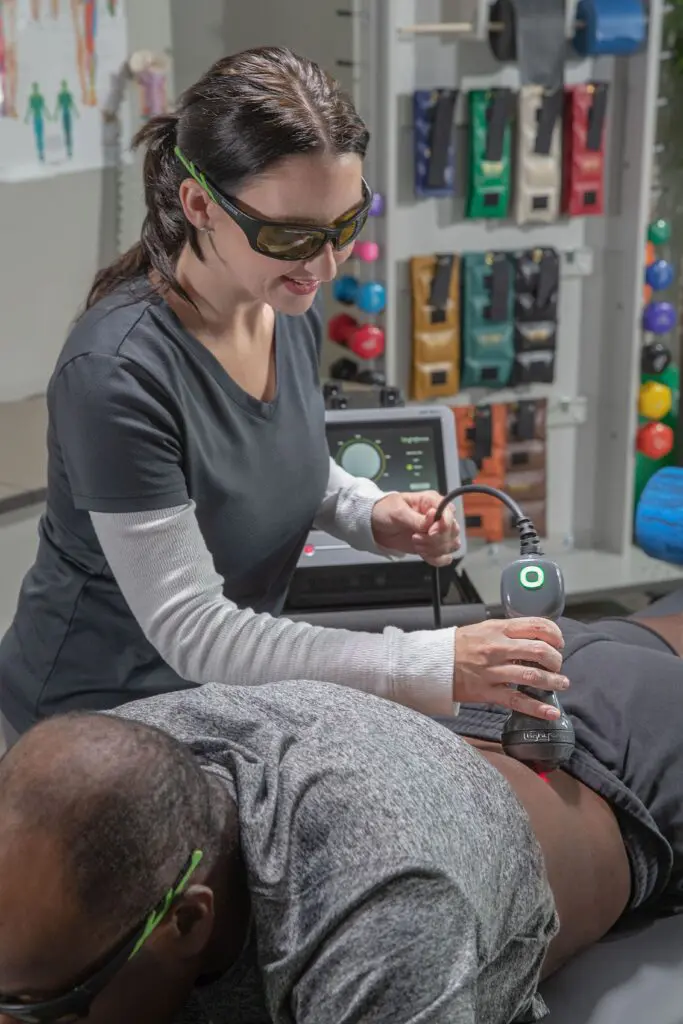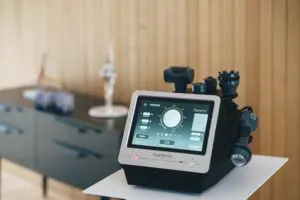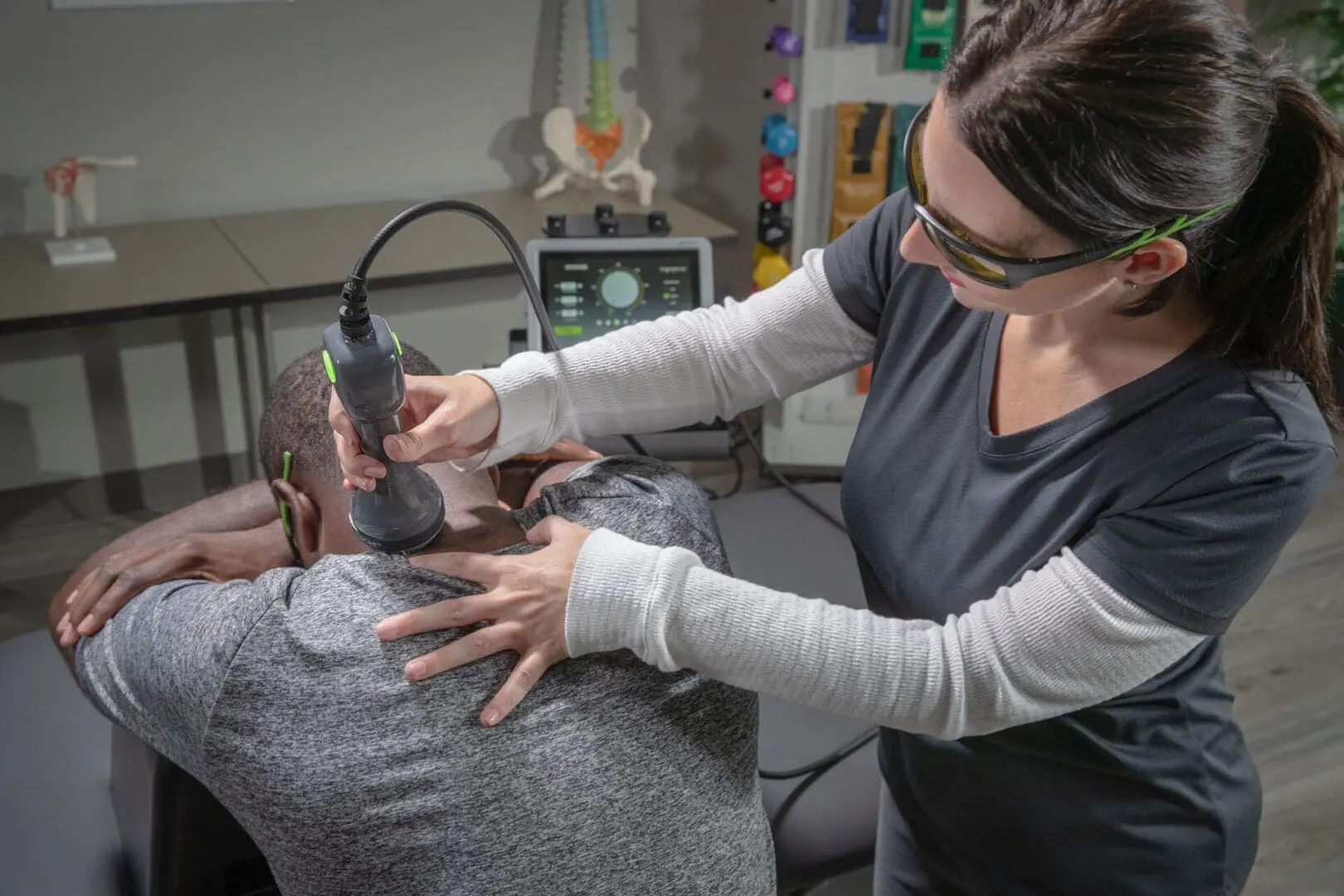How Photobiomodulation Therapy Works: A Beginner’s Guide
Photobiomodulation therapy (PBMT) is a non-invasive treatment that uses light energy to stimulate the body’s natural repair processes. Also known as laser therapy , it’s gaining recognition for its ability to reduce pain and accelerate recovery at the cellular level. But how exactly does it work?
In this beginner’s guide, we’ll explain the science behind photobiomodulation therapy, what it does to the body, and what you can expect from a typical treatment session.
Here’s What You Really Need to Know
Photobiomodulation therapy works by delivering specific wavelengths of red or near-infrared light to body tissues. This light is absorbed by mitochondria in cells increasing ATP production, modulating reactive oxygen species (ROS), and ultimately promoting cellular repair. The result is reduced pain and accelerated recovery.
What Is Photobiomodulation Therapy?
Photobiomodulation therapy is the clinical application of light to stimulate injured or dysfunctional tissue resulting in therapeutic effects. It uses non-ionizing light sources, including lasers and LEDs, in the visible and near-infrared spectrum.
The treatment is painless for patients, requires no downtime, and is increasingly used by physicians, physical therapists, chiropractors, and elite sports medicine providers.

The Science Behind PBMT: How Light Stimulates the Cell’s Biochemical Pathways
At its core, PBMT works by targeting the mitochondria—the “powerhouse” of the cell. When light photons penetrate the skin and underlying tissues, they are absorbed by cytochrome c oxidase (COX), a key enzyme in mitochondrial respiration.
Here’s what happens:
- Light is absorbed by COX in the mitochondria
- ATP (adenosine triphosphate) production increases
- Nitric oxide is released, improving circulation
- Reactive oxygen species (ROS) are generated activating cellular signaling pathways that contribute to cell proliferation, migration, and differentiation,
This biochemical cascade leads to improved blood flow, activation of tissue repair processes, and decreased pain.
Key Benefits of Photobiomodulation Therapy
Photobiomodulation has shown clinically significant benefits across a wide range of conditions, including:
- Acute and chronic pain (back, neck, joints)
- Sports injuries
- Muscle pain and spasm
- Arthritis pain and stiffness
- Plantar fasciitis
Numerous studies have supported its role in both acute and chronic injury management.

What Your Patients Can Expect During a Typical Treatment Session
A typical PBMT session is fast, safe, and comfortable.
Here’s what your patients can expect:
- Patients will be positioned comfortably in a chair or treatment table.
- The LightForce® laser device will be placed over the treatment area.
- The laser emits near-infrared light.
- Sessions last around 5–15 minutes depending on the area and condition.
- Most patients report a soothing warmth during treatment.
Treatment frequency varies, but many patients experience results within 3–5 sessions.
Why Choose LightForce® for Photobiomodulation?
LightForce® is a leader in therapeutic laser technology. Our lasers are trusted by thousands of professional athletes and teams, major healthcare systems, and private practices worldwide. We combine innovative technology with precision dosing and custom treatment plans to deliver unmatched results.
Learn more about LightForce photobiomodulation therapy and how we’re changing the way pain is treated without drugs or surgery.
Who Can Benefit from PBMT?
Photobiomodulation therapy can be used for a wide range of patients:
- Athletes looking to recover faster from injury
- Seniors managing arthritis or joint degeneration
- Chronic pain sufferers avoiding long-term medication
Because PBMT is drug-free and non-invasive, it’s a great option to incorporate into physical therapy plans of care..

Is PBMT Backed by Research?
Yes—photobiomodulation has been extensively researched for decades. Over 700 randomized controlled trials and thousands of peer-reviewed studies have demonstrated its safety and efficacy.
It is recognized by:
- The World Association for Laser Therapy (WALT)
- American Physical Therapy Association (APTA)
- The American Academy of Orthopaedic Surgeons (AAOS)
- The American College of Physicians (ACP)
Related Blog: Photobiomodulation vs Red Light Therapy: What’s the Difference?
Ready to Experience the Power of LightForce Laser Therapy?
Whether you’re seeking more ways to help your patient achieve better pain relief, faster recovery, or improved function, photobiomodulation therapy is a modern, research-backed option for your practice.
👉 Schedule a demonstration for your practice.

Comments